
Indulge in the delicate and soothing flavors of White Soondubu Jjigae. This recipe shows you how to make a comforting, non-spicy version of the classic Korean soft tofu stew.
Korea is famous for its different kinds of soups. Commonly, the soups we make have different main ingredients. To name a few, there’s Kimchi Jjigae where kimchi is the star, Doenjang Jjigae where the richness of the soybean paste is the main character, Budae Jjigae where various processed food makes the soup come alive, and many more!
This White Soondubu is the non-spicy version of the fiery and spicy Soft Tofu Stew. This soup highlights the natural sweetness and umami of the vegetables, the fresh ocean taste of the seafood, and the light creaminess of fresh soft tofu. If you don’t like spice but want the flavor and comfort of Soondubu, then you’ll definitely love this recipe.
Soondubu Instant Soup Base
Disclaimer: I get a small commission at no additional cost to you when you make a qualified purchase under the affiliate links.

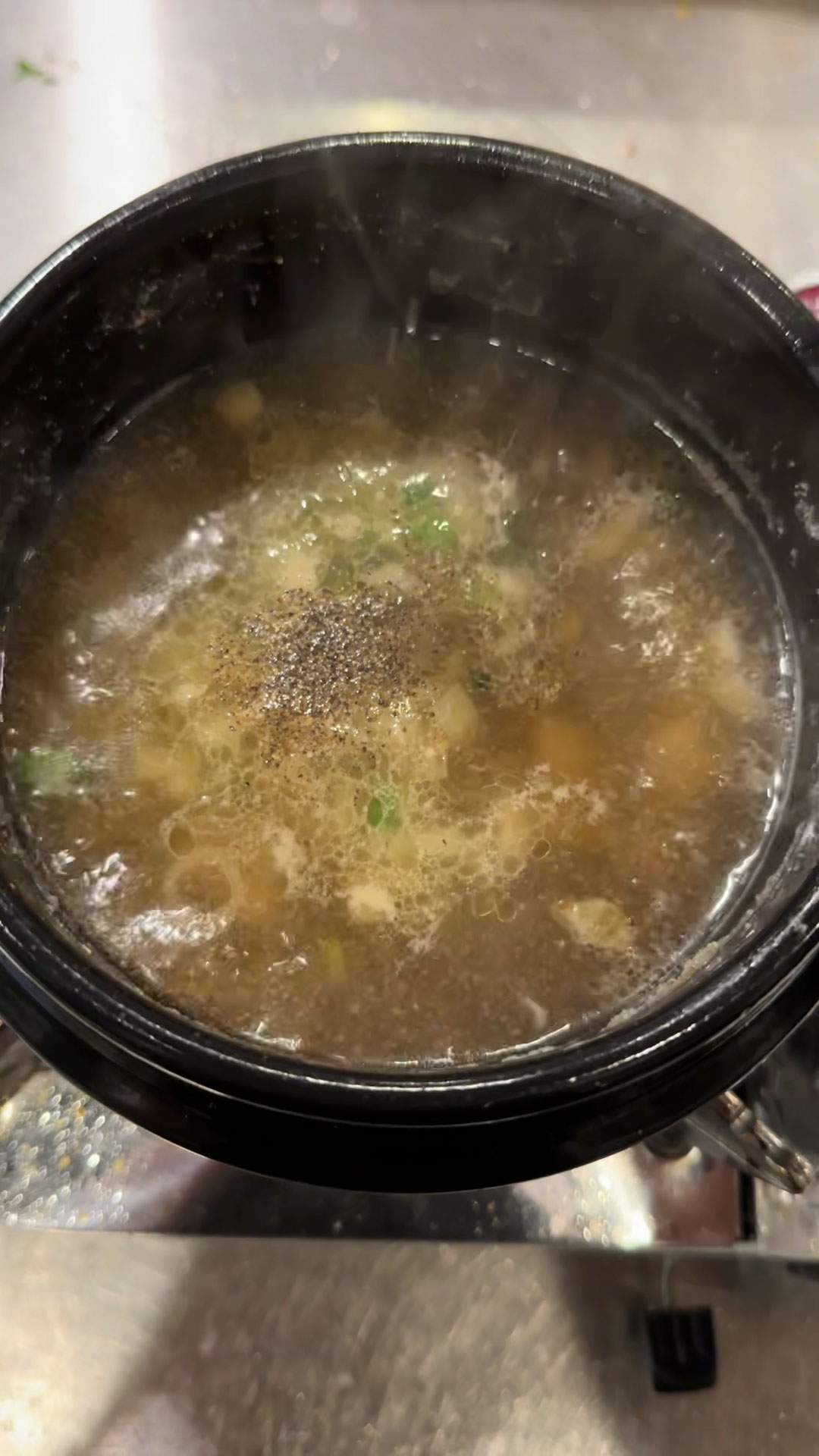
A good soondubu always starts with a good soup base. The basic recipe is to saute scallions and onion until fragrant, and after adding water, season it with a little bit of soy sauce, fish sauce, and hondashi. I find it important to use a little soy sauce only to keep the soup clear. The broth it yields will be light, but as you add the seafood and clam juice, the flavors will continue to deepen.
Aside from using water, you can also use Korean soup stock to make the soup more flavorful. You can make this in two ways:
- Boil dried pollack (hwangtae), dried anchovy (myeolchi), dried herring, and dried kelp or dashima together. You can check out this Kalguksu Recipe to see the homemade stock at work. Alternatively, you can use dashi packs which contain the same contents but are readily packed in tea bags so you just need to boil them to use.
- Soak 4 small pieces of dashima in 2 cups of room-temperature water for 15 minutes minimum. The longer you soak the dashima, the better it tastes! Do not wash it before soaking it because the white granules on top of it are where the umami comes from. You can also use this as a base in Soybean Sprout Soup, Beef and Radish Soup, or Rice Cake Soup.
Soondubu Toppings
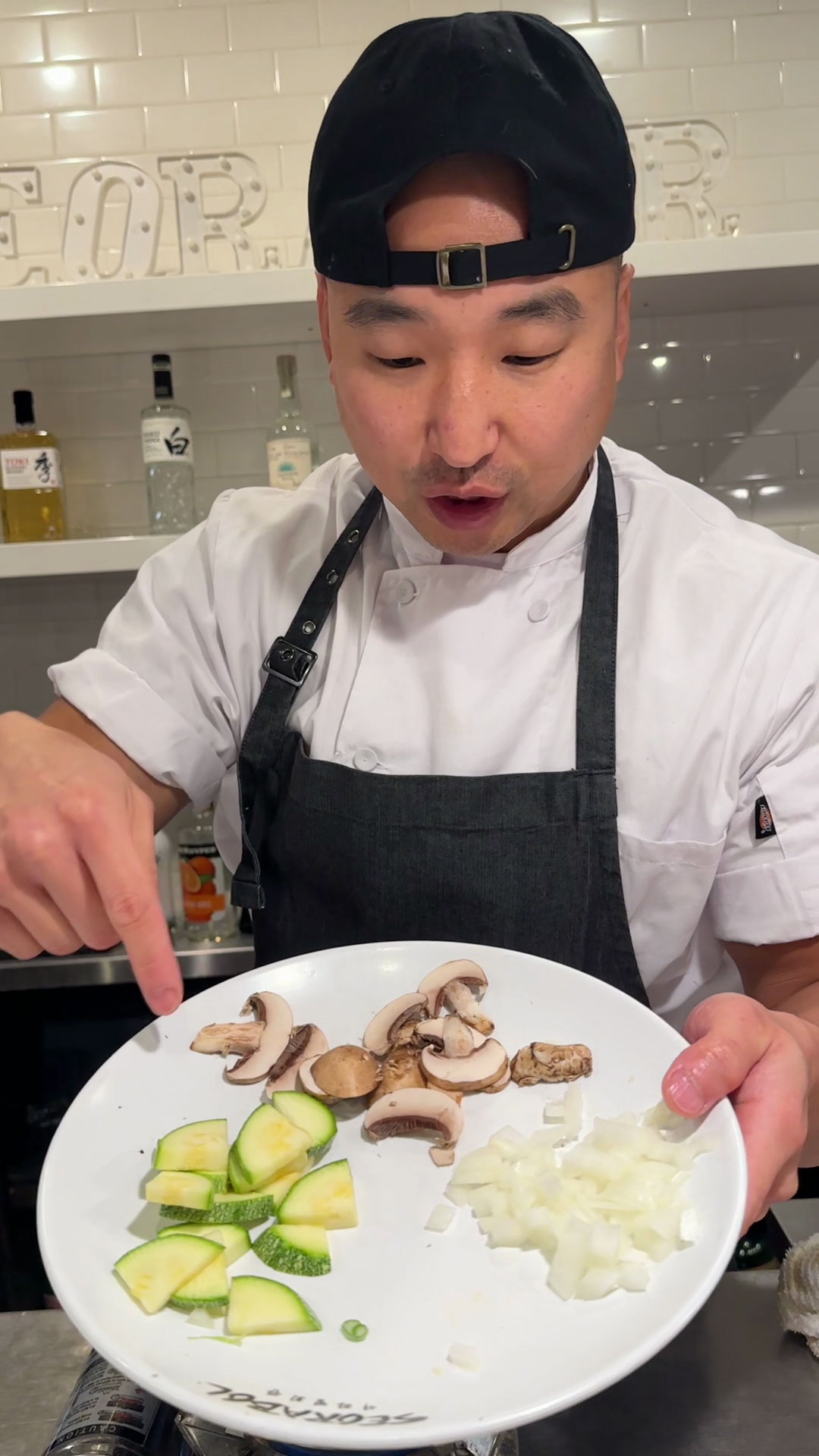
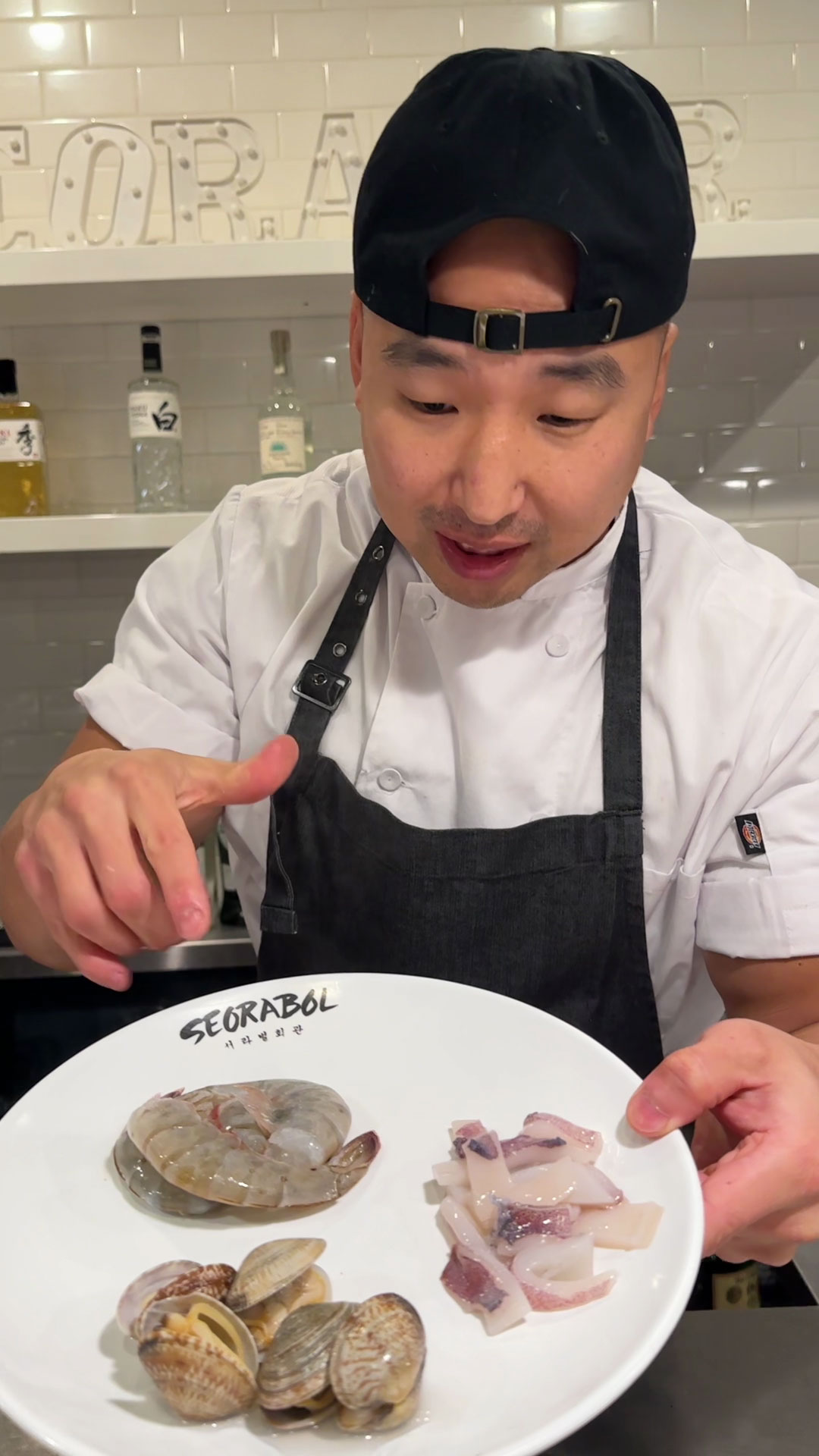
One of the things I love about Soondubu is that it contains vegetables like more onion, zucchini, and mushrooms; seafood such as shrimp, squid, and clams; And of course, soft tofu and egg. It’s completely nourishing and filling which both me and my kids can enjoy! To make it easier, you can simply use frozen seafood mix; And to ensure the best result, use fresh soft tofu otherwise it can impart a sour and unpleasant taste.
This stew is also versatile as you can add other toppings like pork, imitation crab, carrots, enoki mushrooms, etc. If you’re allergic to one or the other, or you just prefer one or the other among the toppings you can put, simply use more of the ones that fit your diet or that you prefer. It’s honestly very versatile!
The Best Pairing for White Soondubu
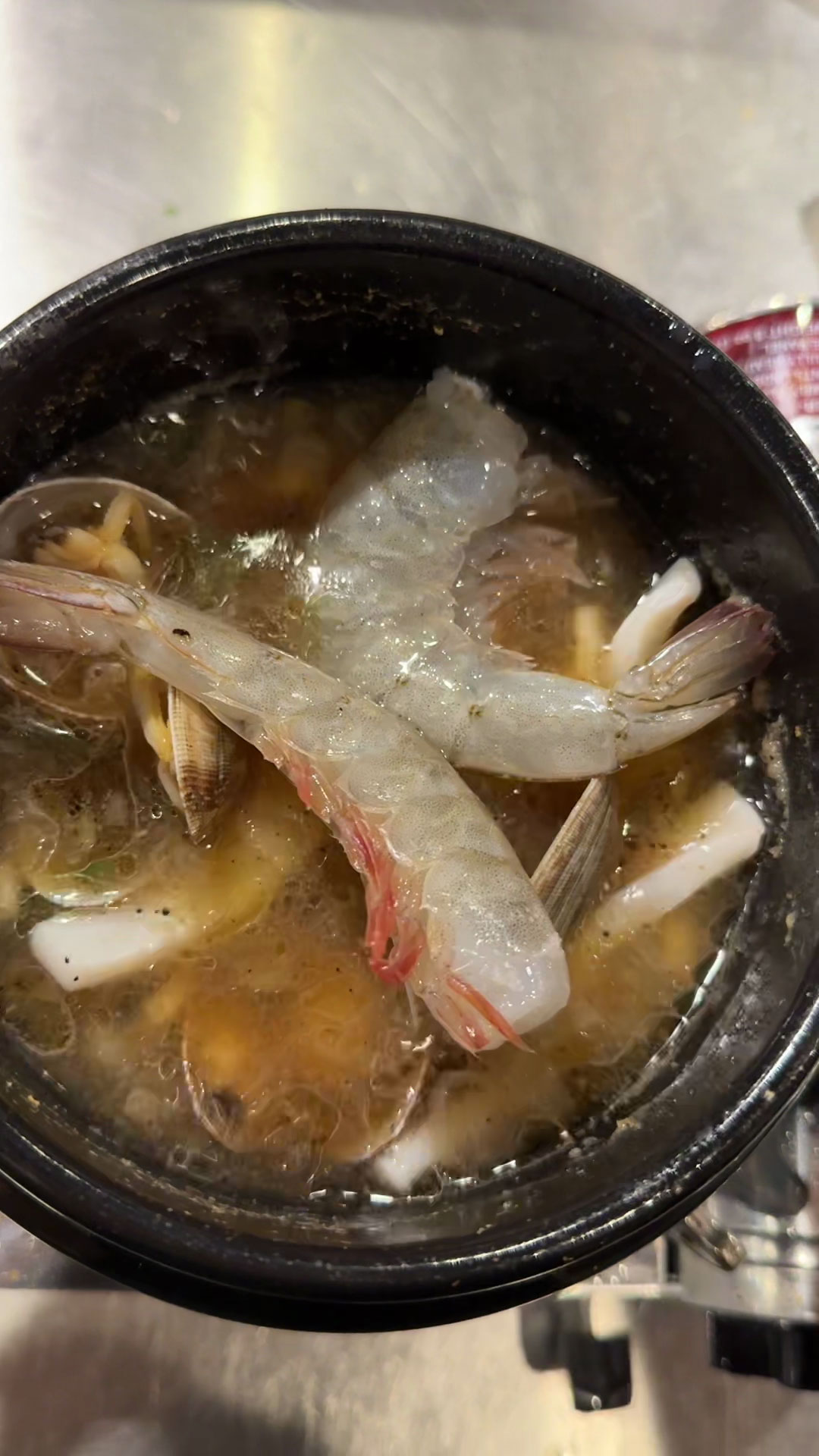
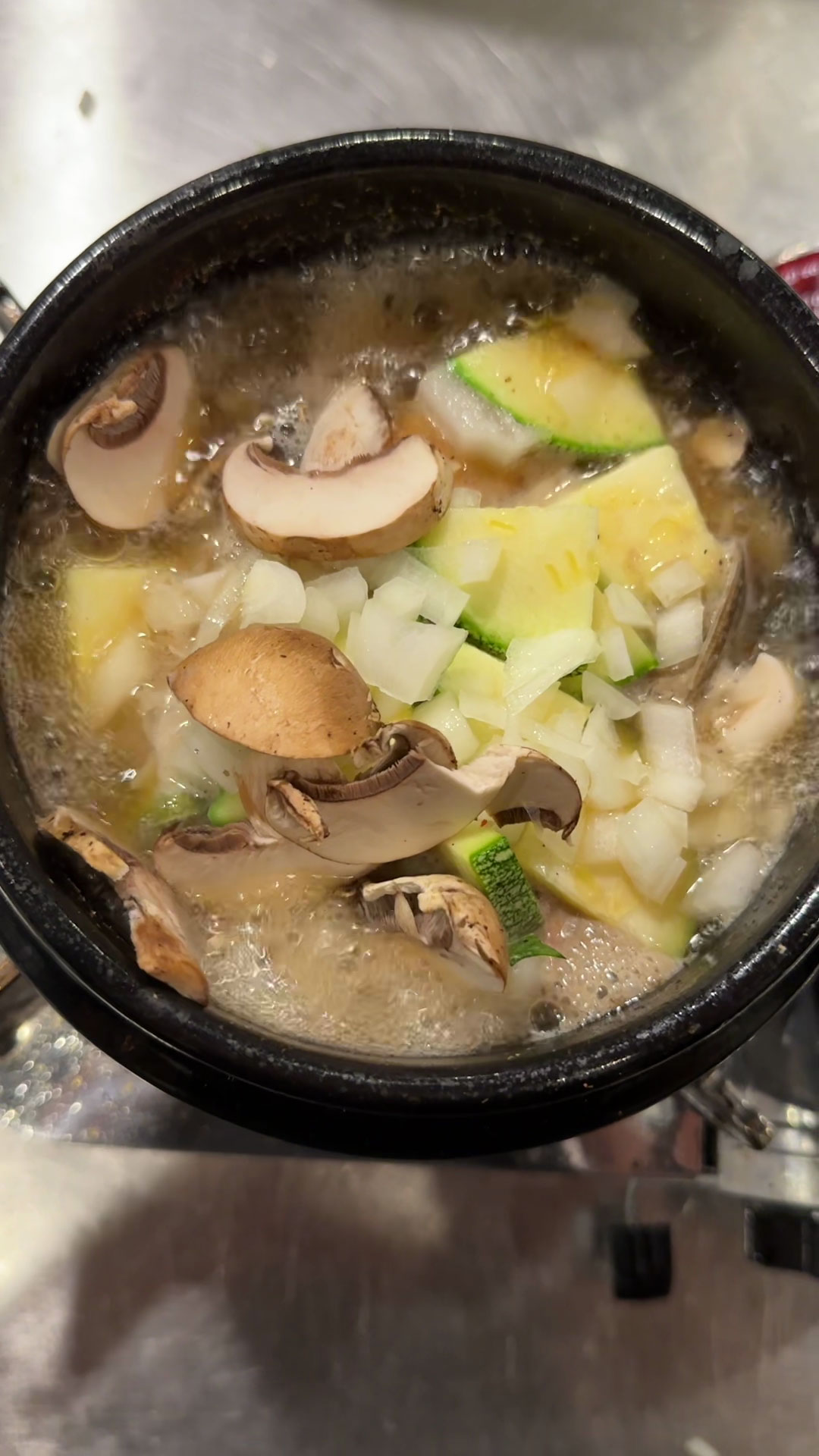
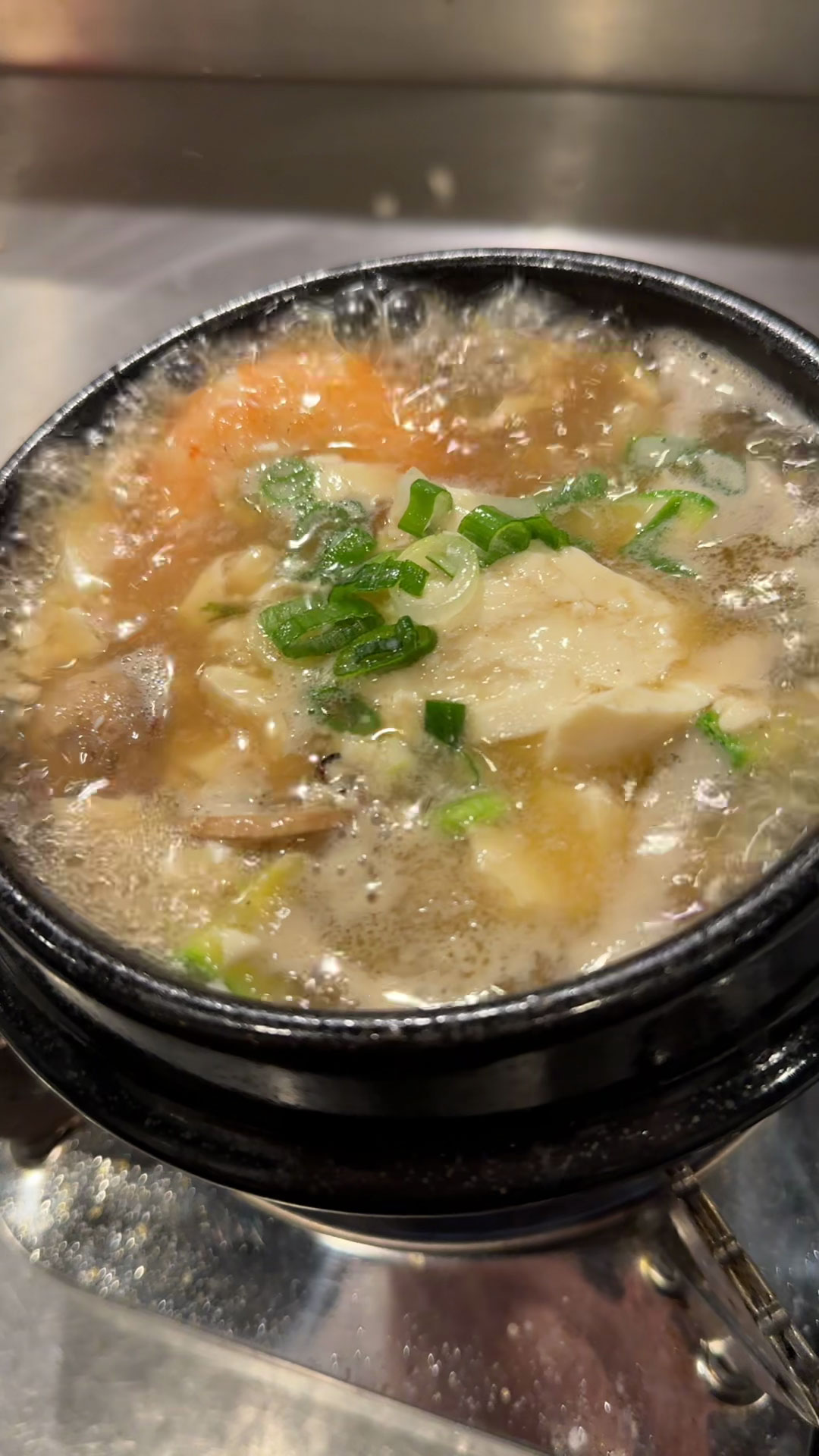
The best pairing for this soup is simply freshly cooked rice. If you’re feeling extra, you can also have a side of kimchi and nori. A meal like this is like home for me! I hope by sharing, you’ll also find it comforting and enjoyable!
Make sure to leave a rating, a comment, or tag me on Facebook, Instagram, or Tiktok when you chop them up! Yeobosayo!
White Soondubu Jjigae
Ingredients
- 150 grams Seafood Short-neck Clams, Shrimp, and Squid
- 150 grams Vegetables Zucchini, Mushroom, More Onion
- 200 grams Soft Tofu
- 1 pc Egg
- 2 tbsp Vegetable or Canola Oil For sauteing
- 1 tbsp Scallions Prepare more for garnish
- 2 tbsp Onion For sauteing
- 1/2 tbsp Garlic
- 1 cup Water
- 1/2 tbsp Soy Sauce
- 1 tbsp Fish Sauce
- Dash of Hondashi
- 1 tbsp Clam Juice
- Salt To taste
- Pepper To taste
Instructions
- Prepare the vegetables by chopping the scallions, onion, zucchini, and mushrooms, then clean the seafood and drain thoroughly.
- Saute the scallions and onion. Once fragrant, add water
- Season with soy sauce, fish sauce, hondashi, and clam juice, then taste and adjust with salt and pepper.
- Let the soup boil, then add shrimp, squid, and clam.
- Once the seafood are 80% cooked, add the zucchini, mushroom, and more onion.
- Once the vegetables are 80% cooked, add the tofu and let the soup continue to boil. Do not mix so the tofu does not crumble.
- Finish by garnishing with more scallions and egg.
- Serve hot and enjoy!
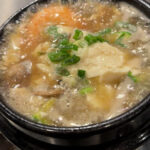





Leave a Reply